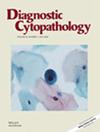Cytology has long been a major screening method for cervical cancer prevention. Human papillomavirus (HPV) testing has recently been introduced for cervical cancer screening, and HPV tests become a major screening method in some countries. To seek the optimal strategy considering the cost-effectiveness for cervical cancer screening, we compared the performance of primary LBC, primary HPV test, and LBC plus HPV co-test in real practice.
From March 2016 to June 2018, 3742 patients were included in this study. Liquid-based cytology (LBC), HPV test, and histopathological assessment were performed in 3727, 1063, and 508 cases, respectively. The sensitivity, specificity, and cost–benefit effects of primary HPV, primary LBC, and co-test algorithms were simulated for 317 cases with LBC, HPV, and histopathological results.
On the LBC, 13.0% of the cases were diagnosed with atypical squamous cells of undetermined significance or higher grade lesions. In the HPV test, high-risk HPV was found in 43.5%, and 11.9% was positive for HPV type 16 or 18. Among the three simulated algorithms, the co-test demonstrated the best sensitivity (97.5%) and the lowest specificity (50.3%). The primary LBC demonstrated the best specificity (53.5%) and a slightly better sensitivity, compare with the primary HPV (95.1% vs. 93.8%). Using the primary LBC algorithm, 82.0% can be determined without additional HPV test, whereas 50.1% could be determined without additional LBC using the primary HPV algorithm.
The primary LBC algorithm for uterine cervical cancer (UCC) screening is comparable to the primary HPV algorithm and has the best cost–benefit effect among the three algorithms.



